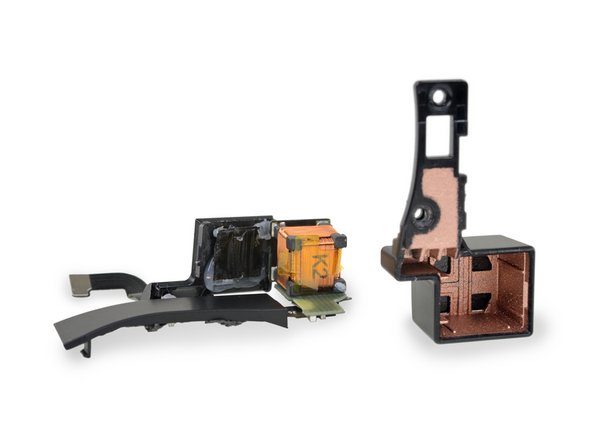crwdns2935425:07crwdne2935425:0
crwdns2931653:07crwdne2931653:0






-
Survey says: a six-degrees-of-freedom magnetic sensor coil for tracking the position of the controller.
-
Cracking open the controller, we find the (much bigger) emitting half of the tracker, and an 8.4 Wh battery to boot.
-
The copper shielding sprayed into the coil housings likely protects from RF interference, while letting the magnetic field through.
-
Interference could explain the tracker's odd placement, and this may be a temporary solution. It's "old" tech, and will probably be worse for left-handed use.
| - | [* black] Survey says: a six-degrees-of-freedom [https://en |
|---|---|
| + | [* black] Survey says: a six-degrees-of-freedom [https://neosid.de/en/news/3d-cube-antennas-for-electromagnetic-6dof-tracking-systems|magnetic sensor coil|new_window=true] for [https://en.wikipedia.org/wiki/Positional_tracking#Magnetic_Tracking|tracking the position|new_window=true] of the controller. |
| [* icon_note] The intensity of the three perpendicular magnetic fields is measured to determine the position and orientation of the controller relative to the headset. | |
| [* black] Cracking open the controller, we find the (much bigger) emitting half of the tracker, and an 8.4 Wh battery to boot. | |
| [* black] The copper shielding sprayed into the coil housings likely protects from RF interference, while letting the magnetic field through. | |
| [* black] Interference could explain the tracker's odd placement, and this may be a temporary solution. It's "old" tech, and will probably be worse for left-handed use. | |
| [* icon_note] Not pictured: we also dug up what looks like a custom-designed [https://d3nevzfk7ii3be.cloudfront.net/igi/MGWOokdPJY2ZEjdU|trackpad ringed with LEDs|new_window=true] (for future light-tracking hardware, perhaps?). |
crwdns2944171:0crwdnd2944171:0crwdnd2944171:0crwdnd2944171:0crwdne2944171:0